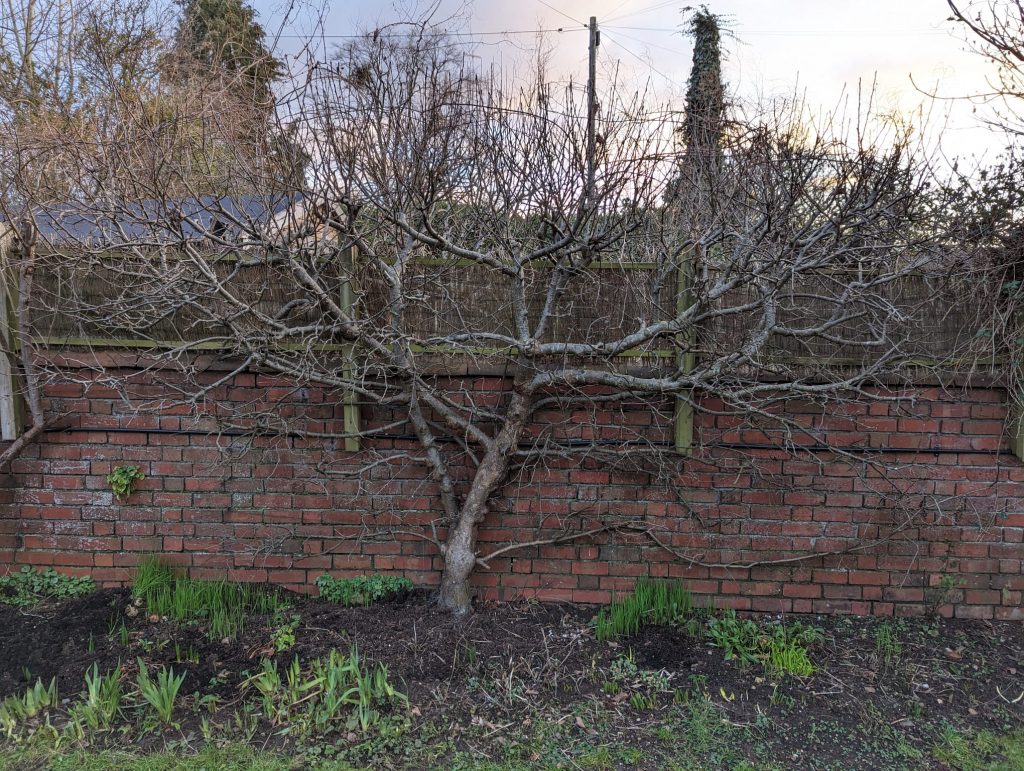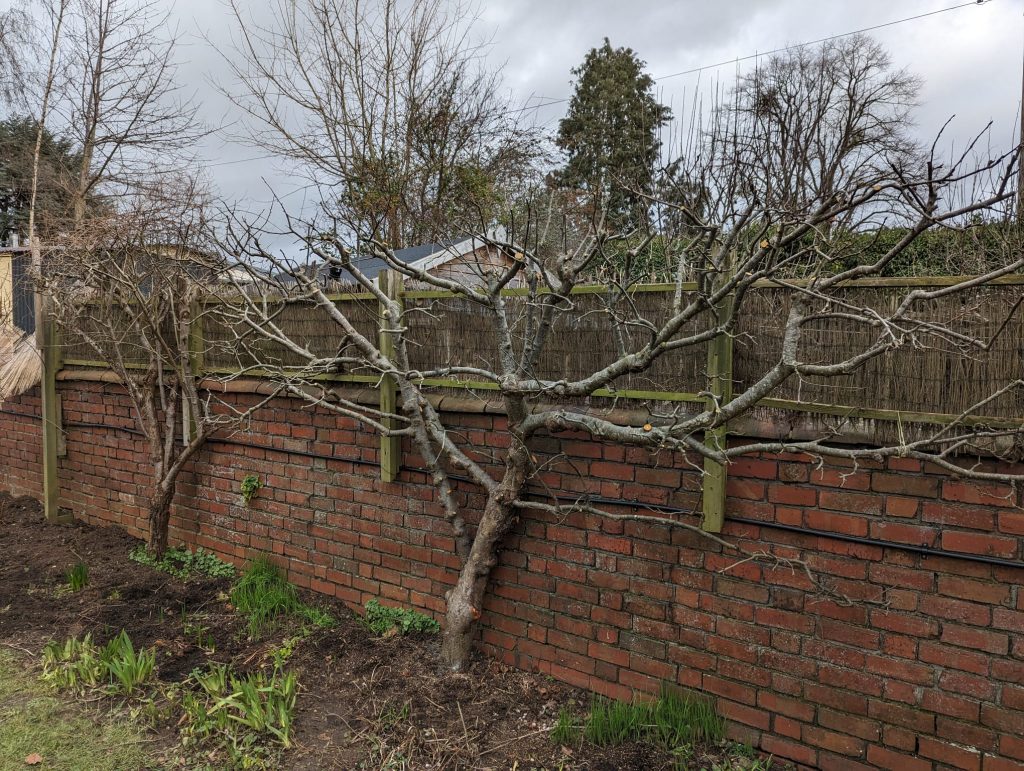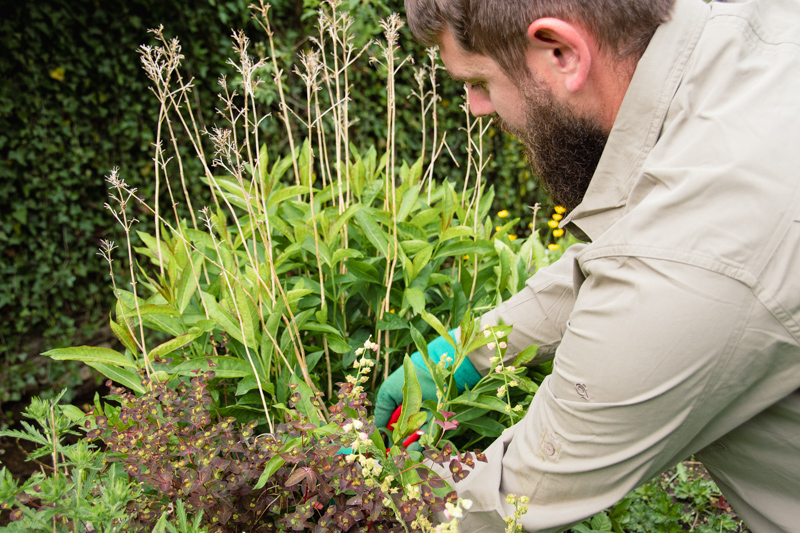Pruning is one of my favourite parts of gardening. It can be a daunting task –
- Is it the correct time of the year?
- Am I taking too much off?
- Will the plant flower or fruit this year?
Employing RoseAbove you can be assured that I will act in the best interest of the plant, putting longevity and the long-term health of the plant above anything else. Using sharp and clean tools, over time we can work on training the plant in the correct way, allowing it to grow to your desired shape or size.
For any help with pruning in your garden, please don’t hesitate to get in touch.
Roses
Roses can take many forms, maybe it’s a shrub? Perhaps a climber – Or is that a rambler? Maybe you have a standard rose? Despite their many forms, roses have been a real passion of mine and I take great care in the correct pruning of each type, focussing on allowing each plant to be its own. Not cross contaminating any plant, allowing it a healthy and prosperous life, promoting the best flowering.
Each type demands a certain style of pruning, at specific times of the year. To achieve a plant with a solid framework, able to support itself and a wealth of flowers requires particular attention. Best pruned in late winter/early spring, with dead heading throughout the year. Removing all dead, damaged, and crossing stems, looking into the roses future to see any stems that may be interacting, based on the position of the bud. Rambling roses require slightly more specific pruning in late summer. With the flowers appearing on old growth rather than the new shoots. We need to be cutting back the old flowering stems, then securing in any new stems ready for next years show!
With the unpredictable weather we must bear in the UK, we really need to take advantage of the fruiting on our trees! With the correct pruning, shaping, and care, you can enjoy an abundant crop (weather permitting).
Fruit Trees
Bush or standard trees should be pruned in winter, while the tree lies dormant. This is the best time of year to reshape with crown thinning, reduction or lifting. Along with deadwood pruning, and in some unfortunate cases pollarding. The aim is to create a bowl shape, with airspace through the centre of the tree, allowing each branch to perform its best.
Trained and mature trees can be pruned in summer. This slows down the growth of the tree allowing it the time to focus on fruiting. Cutting the leafy stems off in summer allows more air and light in to mature fruit, and more often than not, encourage more crop the following year.


Each cut can change the shape of a tree in years to come. Therefore, it takes a particularly long time, with lots of careful consideration, allowing each branch the space to grow into, not just this year but for the foreseeable. As a rule of thumb, you should not reduce the tree by over 1/3rd, this means that within 3 or 4 years an old, neglected tree can be transformed into a specimen. Furthermore, each cut should be carried out carefully, not allowing branches to break or tear. To do this I use the highest quality tools of the sharpest calibre. Maintained and clean frequently to stop any nasties.
Climbers
Climbing plants can really add value to your garden. Covering up unsightly corners, or adding a vertical element to the flat garden. Each climber, and there are many, requires careful pruning. Some may bleed to death, others flower at odd times throughout the year and you may be cutting off the flowers without knowing! Leave the hard work to me, and rest assured your climbers will flourish.
I can also aid in the re-wiring of all climbers, helping train and reshape each plant to give it its best life.


Seasonal Pruning

Much like others listed in this section, different plants expect different pruning times. To regulate growth and encourage an abundance of flowering for this year and next!
Perhaps you need help with unruly Cornus in early spring, the vulnerable Hibiscus or Hydrangea in March and April, or the Forsythia in June. Maybe it’s the fruit bushes that need thinning in autumn, and wintery cutbacks of an herbaceous border.
Either way, your garden will have year-round attention, I can develop a pruning plan and book in visits throughout the year to provide a professional and educated service, giving your garden the best chance at all its colour.
Topiary
Using sharp and clean tools I can help you with the topiary in your garden. It may be a simple box hedge, ball, or cone. Larger Taxus shaped into fauna, or conifers into clouds.
Typical Topiary species;
- Buxus
- Thuja
- Laurus
- Ilex
- Taxus
- Ligustrum
Topiary will need regular clipping with sharp tools to reduce dead ends caused by tears. Training will come with careful pruning. The limit of what can be accomplished is bound to the confines of the imagination.
Renovation Pruning
Unfortunately, in some cases, plants do not quite receive the tender love and care they so require. In these cases, years of neglect, the plant must succumb to a renovation prune.
This is generally a harder prune, often testing the plants rigour. To complete successfully you need to have the knowledge and understanding of how the plant will react to this drastic measure. Making sure that every cut that’s made is to save the plant.
Often times the plant will have dead and diseased branches or stems, and upon completion of the prune will be out of shape. However I will always prioritise the life of the plant above its initial appearance, then we can focus on correcting the plant for the future. To quote Mr Miyagi “Bonsai choose own way because root strong”, if the plant is willing to try, it will succeed with a bit of succour, and in turn become a unique and special sentiment to the garden and mother nature.



